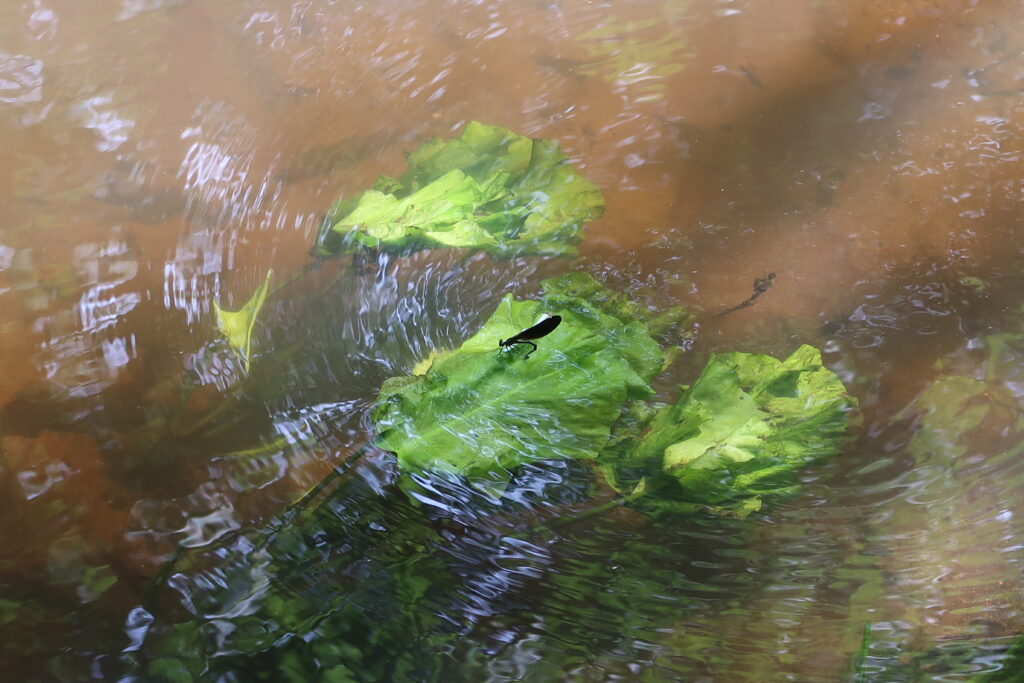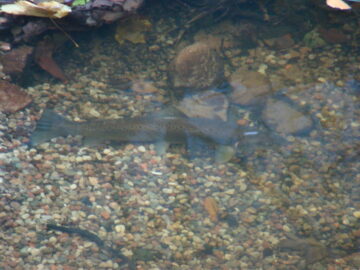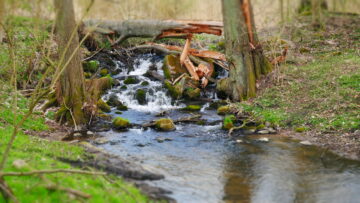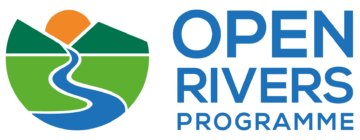European rivers have the highest fragmentation in the world, with only one-third in a ‘good ecological condition’. Similarly, rivers in the Oder Delta have also suffered from human intervention and have lost their natural character many a place. As the current dramatic situation on the Oder River shows, our rivers are under constant pression and their resilience is limited. Together with partners, we are therefore working on rewilding the watercourses in our region and welcome the support by the European Open Rivers Programme, a grant giving organisation dedicated to restoring rivers.

Rivers and contemporary challenges
Rivers harbour some of the richest biodiversity on earth and at the same time provide vital ecosystem services to society. Together with the riverside ecosystems, rivers also play an important role in ensuring habitat continuity, which is particularly important for restoring and protecting populations of species threatened with extinction. Rivers also provide sediments that keep deltas above the sea level and nutrients that fertilise floodplains. Another important function of rivers is to support biological purification processes that help maintain water quality, which as we can observe on the Oder River today, is crucial for both people and wildlife. Biodiversity and the self-purification ability need natural healthy and resilient rivers – with irregular channels and banks that provide diverse niches for specialised species, with floodplains that store water, and with free-flowing water and connectivity of habitats in their wider surroundings to sustain wildlife.
European Open Rivers Programme
Meanwhile, most of Europe’s rivers and riparian habitats are today heavily transformed by humans. Riverbeds have been artificially straightened, deepened, and embanked in many places, the free flow of water restricted by numerous barriers in the form of weirs and dams, and the immediate surroundings of rivers drained and reclaimed for human activity. The ecological condition of rivers transformed in this way is prone to rapid deterioration and their biodiversity disappears with time. Moreover, they lose their capacity for self-purification and natural flood control. Alarmingly, European rivers have the highest fragmentation in the world, with only one-third in a ‘good ecological condition’, as defined by the EU Water Framework Directive. These challenges are being addressed by the European Open Rivers Programme, a grant giving organisation focusing on river restoration by removing river barriers to restore habitat continuity, biodiversity, good ecological status and the morphology of river channels.

Rivers in the Oder Delta
The rivers in the Oder Delta have also suffered from human intervention and have lost their natural character in many places. Their resilience towards negative human impacts needs our support. Together with partners, our team is therefore working on the restoration of watercourses in the region by restoring natural ecosystem processes in rivers and riparian habitats, e.g. by rewetting wetlands near rivers to increase water storage, planting riparian trees to provide shade and lower water temperatures, removing watercourse obstacles to increase habitat connectivity throughout the river, and supporting river species e.g. by restoring spawning grounds. Thanks to the Open River Programme grant, we will be able to make old water dams in the Ina river basin, one of the main rivers in our region, passable for river organisms and thus help restore their populations in the Ina and the Oder rivers.
Restoration of the Ina River
Located in the centre of the West Pomeranian Voivodeship, the Ina River is a right-bank tributary of the Oder River with a length of 126 km and a river basin covering 2,151 km². Like most rivers in Europe, the Ina and its tributaries bear the marks of bank regulation and damming development. Drainage in the Ina river basin has resulted in numerous oxbow lakes, important breeding grounds for many fish species, to get cut off from the main current. In order to restore the habitat continuity, we plan to make 3 weir ruins on Ina´s tributaries passable, namely weirs on Biała Struga, Wisełka and Sławęcinka. These watercourses are a very important part of the Ina catchment and are valuable spawning areas for migratory salmonids such as sea trout (Salmo trutta m. trutta) and brook trout (Salmo trutta m. fario). Rare fish species covered by the Habitats Directive are also present here, including whitehead (Cottus gobio), river lamprey (Lampetra fluviatilis) and brook lamprey (Lampetra planeri).

The project will be based on nature-like solutions (e.g. a bottom ramp made of gravel and stone material) and, as a result of the improvement, several kilometres of the river course on each of the tributaries mentioned will be opened up to the migration of aquatic organisms. We have just selected a designer to prepare the concept and the necessary technical documentation required by law to carry out the planned activities. Once the administrative permits have been obtained, a contractor will also be selected to implement the project on the ground. Practical support for the project’s activities is being provided by our Polish partner organisation, the Society of Friends of the Ina and Gowienica Rivers (TPRIiG), whose members have hands-on expertise in the wide field of river restoration activities.
Come back soon to follow the progress of the project!

Further reading:
- Request for tender – (PL)
- Request for tender – (PL)
- Clean-up action on the River Ina (PL) and (GER)